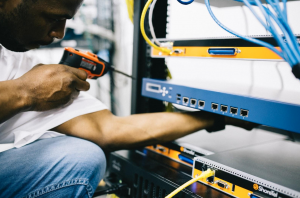Workplace injury prevention should be a top priority for every small business owner, especially now that the employees are returning to the physical workplace.
No matter the industry or the niche you’re in, your workplace has one or more safety hazards, just like any other workplace. No matter how much you think that there is nothing in your work environment that might pose a risk to your staff, a professional health and safety inspector would undoubtedly discover some safety hazards that could put your workers and your brand in jeopardy. Needless to say, the costs of illness and injury to businesses should be enough to make you take health and safety more seriously moving forward.
Luckily, there are many ways you can eliminate the risks and hazards in your place of business or the worksite, and when an injury does happen, your workers can even leverage a mobile app to get better faster. Let’s break all of this down and give you the essential tips you need to use in order to take workplace injury prevention to the next level and keep your employees and your business out of harm’s way.
Put the right safety policies in place
First and foremost, you need to have the right health and safety policy in place in order to ensure legal compliance, but also to have the necessary internal documents that will make everything clear to your workers about safety in the workplace. You need to put everything in written form to ensure that everyone is on the same page, and in order to disseminate this information effectively throughout your organization.
Be sure to work closely with your HR expert and your legal counsel to ensure all the points are covered in this document. Your HR expert will know exactly what the policy needs to have in order to provide the best possible protection to your workers, and your legal representative will ensure that the policy covers all the legal bases for you and your employees.
Provide proper training and education
When you have finally drafted your health and safety policy, it’s time to provide the proper training and education to your staff. After all, you can expect people to inherently know what the possible hazards are and how to stay safe in the workplace, especially the newcomers. Keep in mind that simply putting up signs will not do the trick, so you need to organize training and workshop sessions with your teams. You also want to know the dos and don’ts for handling work related accidents, to prepare your staff and your administrative team.
It’s a good idea for your HR staff to conduct these training sessions, as these experts can clearly communicate the details of your health and safety policy to your employees. You also want to have a senior member or your employee collective handle the practical portion of the training session, and use their experience to convey all the safety rules and important considerations to the rest of your workforce.
Provide the right safety equipment
Providing quality safety equipment and clothing is non-negotiable if you want to keep your company and your workers safe at all times. This is especially true in many developed countries and regions, such as Australia, where stringent codes and regulations against unsafe and unhealthy working conditions are in place. Fortunately, business owners have the ability to acquire some of the finest workwear in Australia from reputable brands with decades of experience in the industry, because Australia has some of the best workwear manufacturers in the world that follow the latest standards and adhere to the safety laws and regulations.
The safety workwear your employees should have includes helmets, gloves, luminescent vests, knee pads and the proper footwear, all of which is a standard on construction sites and high-risk work areas like warehouses. This will, of course, depend on the nature of their work, so sometimes all your employees might need is insulated clothing or flexible uniforms to help with comfort and movement.
Conduct regular inspections and maintenance

Preventing injuries in the workplace will often come down to your ability to conduct regular health and safety inspections and maintenance. Asset maintenance is particularly important for ensuring the safety of your employees, and it also helps boost efficiency and productivity at work.
You can have an in-house team conduct daily health and safety inspections as well, to make sure that the workplace is in top shape, which will help you prevent injuries but also minimize legal liabilities. When an accident does occur, it will most likely be a minor one because your team was so diligent in maintaining a safe workplace.
Build a culture of safety in the workplace
Last but not least, keep in mind that it’s important to create a culture of safety at work in order to inspire and motivate your workers to adhere to the safety policy and all the safety rules you have in your organization. Without this kind of culture in your business, it can become easy for some employees to start cutting corners, which is when the accidents tend to occur.
Dealing with the after-effects of a workplace injury can be a challenging task, and while you can’t prevent every injury, you can definitely minimize the risks by nurturing the right culture and mindset.
Over to you
Workplace injury prevention should be a top priority for every small business owner, especially now that the employees are returning to the physical workplace. With these tips in mind, go ahead and create a better health and safety strategy that will help you keep your company and your workers safe over the long term.


Join the conversation!